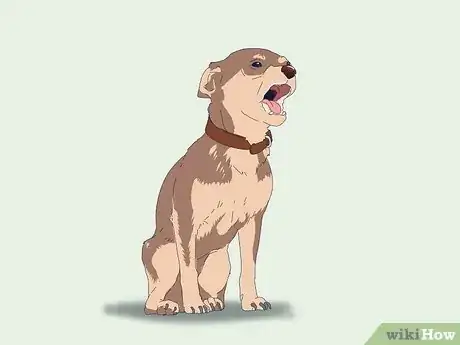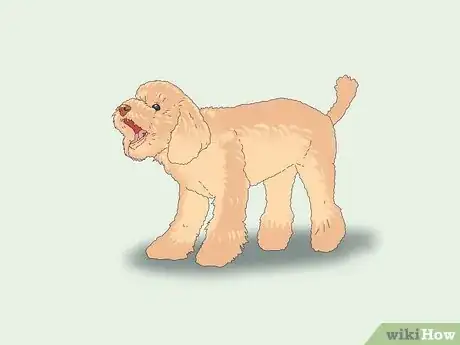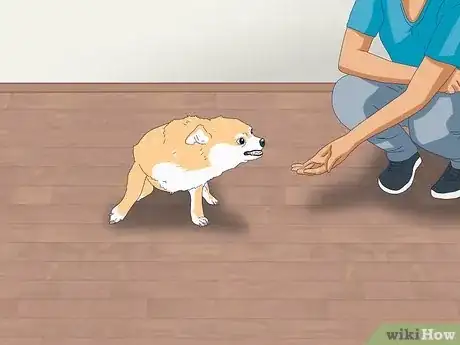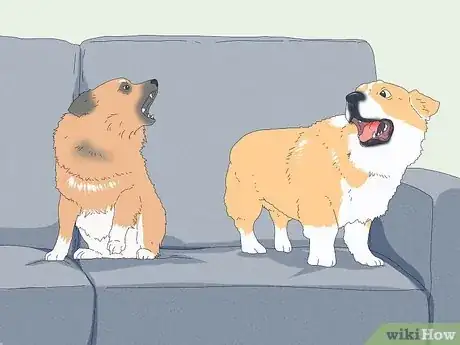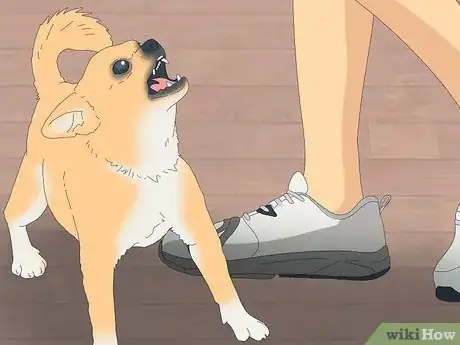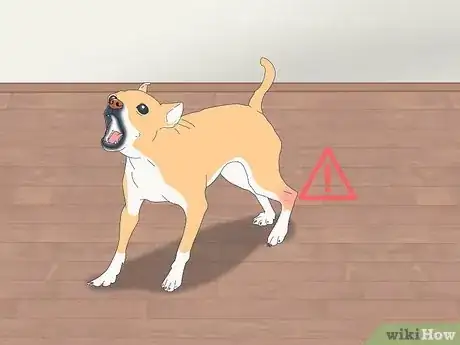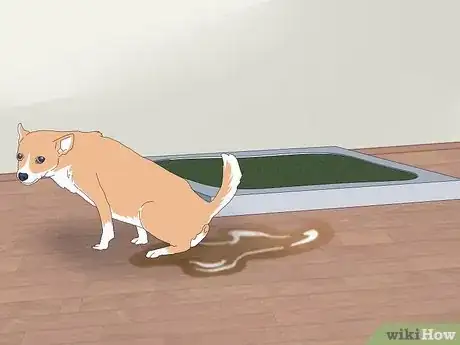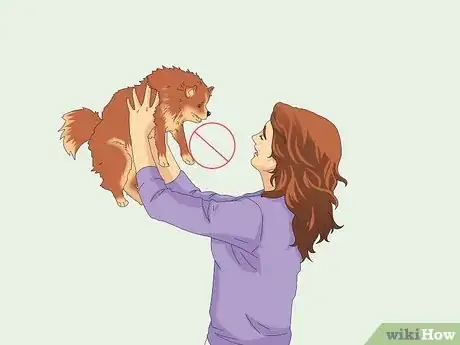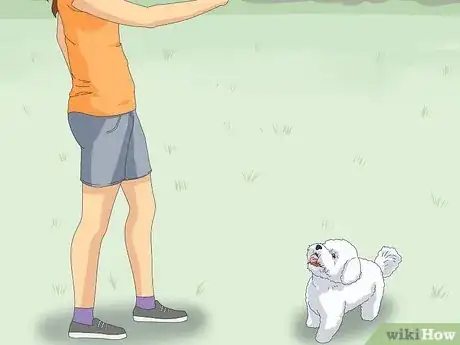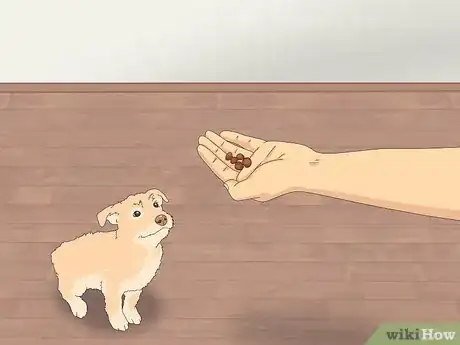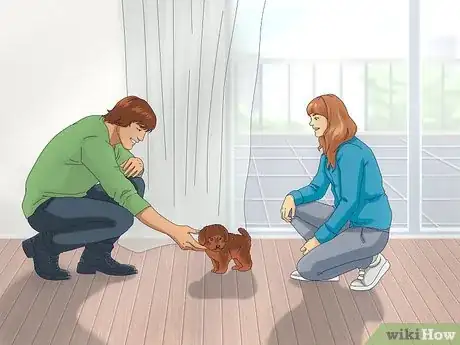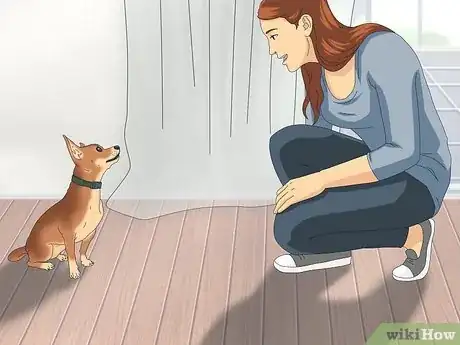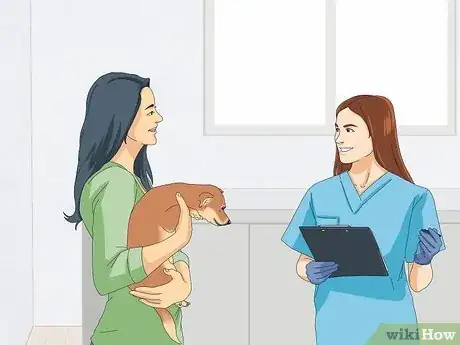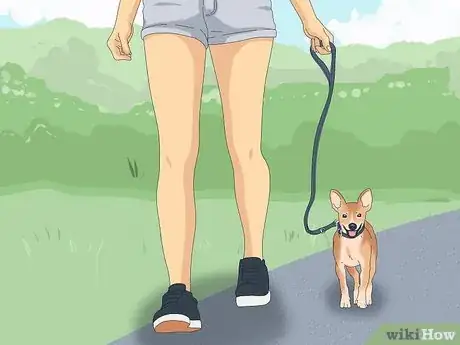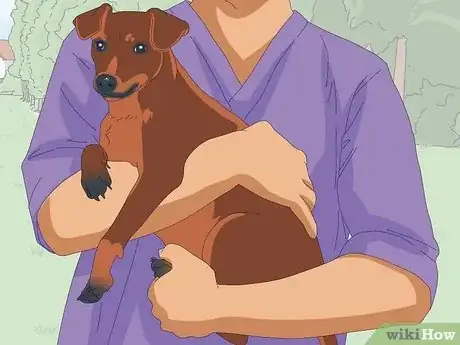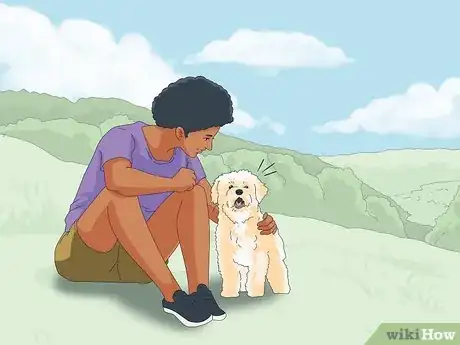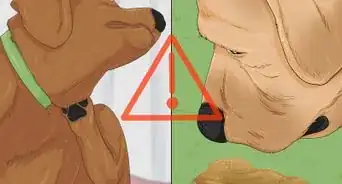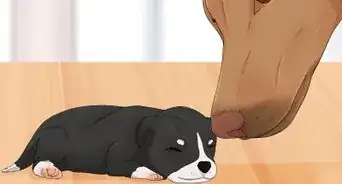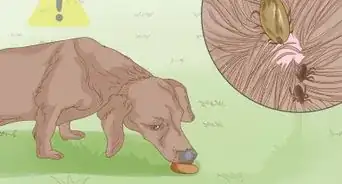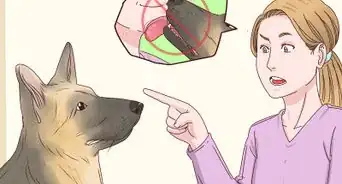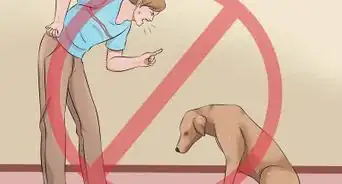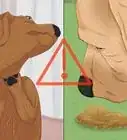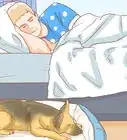This article was co-authored by Lauren Novack and by wikiHow staff writer, Madeleine Flamiano. Lauren Novack is a Certified Dog Behavior Consultant at Behavior Vets NYC where she helps fearful, anxious, and aggressive pets and their owners. She has completed coursework for her MS in Applied Behavior Analysis at Hunter College. Lauren’s research explores the intersection between training practices and animal welfare. She currently serves on the Editorial Advisory Board for Daily Paws and has appeared on Fox & Friends, Rachel Ray, and various news outlets with her dog Grayson.
There are 17 references cited in this article, which can be found at the bottom of the page.
This article has been viewed 110,131 times.
Do you have a little dog with a big attitude? If so, then your pup might have small dog syndrome, a behavioral issue that causes them to be really aggressive or anxious.[1] While your petite pet may be cute, you probably want them to be less of a handful. We're here to help you out. In this article, you'll find a comprehensive guide about what exactly small dog syndrome is and how to treat it. Read on to learn how to overcome misbehavior and enjoy the big perks of a well trained small dog!
Things You Should Know
- Enforce boundaries and rules so your small dog doesn't become too dominant.
- Socialize your small dog so they're calm around people and pets.
- Avoid being overprotective and carrying your dog all the time so they don't develop anxiety.
- Reward your small dog to provide positive reinforcement for the right behaviors.
Steps
What is small dog syndrome?
-
1Small dog syndrome is used to describe small dogs who regularly misbehave. While “small dog syndrome” isn’t a scientific term, it is a phenomenon that lots of veterinarians and pet-owners recognize. Small dog syndrome is a phrase used to describe small breeds of dogs that act dominant and aggressive toward people and other pets.[2]
- Sometimes, pups with small dog syndrome are also really anxious because their owners are overprotective.
-
2Small dogs aren't born with small dog syndrome—it's a learned attitude. It typically occurs when small dogs aren't treated like larger breeds just because of their more petite size. Since small dogs are usually seen as less intimidating or dangerous, owners may brush off signs of aggression.[3]
- Owners might not take the time to train their small dogs, enforce healthy boundaries, or give them outlets to express their natural canine and breed-specific behaviors. A toy poodle, for example, may not be taught to sit and greet a guest, while a boxer would.
Signs of Small Dog Syndrome
-
1Disobedience. When you give basic commands, does your dog refuse to listen to them? Dogs with small dog syndrome may not only ignore a simple request, but they may outright disobey it.[4] For example, if you ask them to sit, they might snarl and lunge at you. A small dog may have a general disregard for household rules and have poor impulse control.[5]
- When it’s time to go for a walk, does your dog nip at you or growl when you try to put on a leash? Many dogs with small dog syndrome will resist any attempt to control them and fight to go off-leash.[6]
- Does your dog beg for food? While many dogs beg for food, dogs with small dog syndrome may be particularly persistent. They may whine, bark, and stare until they get their way, despite being told to quiet down.
- In extreme cases, a small dog may start refusing their own food in favor of table scraps. They are often much better at training their owners than their owners have been at training them.
-
2Poor social skills. Dogs who are overly coddled, did not go to puppy class, or were under-socialized may never have developed social skills. Because of this, they may struggle to play with and greet other dogs in a friendly way. Pay attention to how your dog interacts with other dogs, whether in your home or when you're out.[7]
- A small dog may be terrified of other dogs. They might bully other dogs to make them go away, like chasing other dogs away from the food bowl or growling at dogs that attempt to get on the couch with them.
- Your dog may be very aggressive on walks. They may bark, lunge, or growl at passing dogs.
-
3Aggression towards people. How does your dog react to guests? A small dog may ignore guests who do not want to be jumped on or licked. A small dog may also be aggressive with guests. They may growl when guests come in and might occasionally nip at people. This anxiety and aggression stems from poor socialization and a lack of awareness about boundaries.[8]
- Your dog may also push through doors and immediately approach people instead of waiting for you to walk inside a building. For example, they might pull you into a grocery store to investigate all the sounds or run over to customers.
- In order to get attention or treats from other people, your dog may also whine in an attempt to get what they want.
- Dogs with small dog syndrome may also ignore personal boundaries and jump on people without warning. This behavior can be especially risky if they pounce on small children.
-
4Anxiety and health issues. Small dogs may also develop severe anxiety. If you constantly feel the need to protect your dog from danger, they may learn to see the world as a dangerous place. Your dog may become nervous easily, which can sometimes lead to becoming startled and then acting out.[9]
- There are other physical health problems associated with small dog syndrome, too. If you're carrying your dog around a lot, they may become overweight. Weight gain can lead to joint pain as well as extra pressure on their organs.[10]
-
5Difficulty potty training. Many owners prefer to keep their small dogs inside for their safety, then leave pads down and assume their pets will use them. However, small dogs won’t automatically know what to do when they see pads. Even small dogs who potty indoors and aren’t let outside on their own need to be taught to do so in the specific area designated for them.[11]
- The longer they're allowed to pee everywhere, the longer the potty training process will eventually take.
- Dogs with small dog syndrome may present a real hassle because they might jump up on your bed or furniture, including when they need to go potty.
- Your dog may not just urinate in your home. Your dog might also pee when visiting the homes of friends or family members.
Solutions for Small Dog Syndrome
-
1Avoid picking up your dog too frequently. If you always carry your dog, they may develop severe attachment issues and feel like they need to be with you all the time.[12] Support your small dog's independence and train them to develop a calm personality by teaching them to walk like any other breed.[13]
- You should only pick your dog up when it's necessary for your dog's safety. For example, if an aggressive dog is running at your dog, it's appropriate to pick your dog up.
- Many small dogs are under-socialized and may stop walking because they are nervous or are physically out of shape. They may learn that if they stop, you will eventually pick them up.
- Start with short walks in calm areas, and work up to longer walks in busier areas once your pup is more comfortable on walks and is interested in exploring.[14]
-
2Hold your small dog to the same standards as a larger dog. While you may not see your small dog's jumping or aggression as much of a nuisance right now, ignoring the problem can lead to many behavioral issues associated with small dog syndrome. Avoid training your dog to believe it can act differently than other pets.[15]
- If small dogs believe they're the exception to the rule, then they may start to think they're the "alpha" and boss other animals around.[16]
- When you communicate with your small dog, use the same firm voice and give commands you use with other pets so your small dog is aware that you're the "alpha" of the house.
- Determine house rules just as you would for any dog. You may require that they sit before being invited onto your lap, or before you put their food bowl down.
-
3Reward positive behavior. Teach your pup what to do and reward those behaviors. Give your dog a treat, tell them they're a good dog, initiate a play session, take them on a walk, or give them a good belly rub when they are behaving appropriately.[17]
-
4Encourage your dog to relax around larger dogs. Larger dogs who are socialized properly rarely pose a risk for small dogs. When a small dog becomes nervous around a larger breed, correct that problem rather than feeding into their anxiety by panicking yourself. When you pass a larger dog, feed your dog treats. Talk to them in a soothing voice. [18]
- Repeat this behavior every time you're passing a larger dog—over time, you'll socialize your small dog to look forward to walks, no matter what pet they run into.
- Your dog will learn to associate larger dogs with good, happy things rather than danger. This can reduce anxiety and aggression associated with small dog syndrome.
-
5Inform others how to interact with your dog. To make sure a visit from a friend or family member does not undo your dog's progress, let other people know the rules for your dog.[19]
- Explain basic rules. Inform guests not to let the dog jump on them, and not to let the dog up on the couch uninvited.
- Let visitors know that table scraps are not okay for your dog unless they're placed in his bowl.
-
6Get help from a certified trainer or behaviorist. A certified dog trainer or dog behavior consultant can do wonders for a dog suffering from small dog syndrome.[20] Seek out the aid of trainer in your area if your dog's issues are not improving.[21]
- Go for a trainer that values positive reinforcement over punishing a dog. Punishment-based techniques have proven to be ineffective. Most trainers have a website that overviews their training process.
- You can also read reviews of trainers online, or contact past clients. This can help you make sure a trainer's techniques are effective.
- When meeting with potential trainers, make sure the trainer is friendly, listens to you, and respects all your concerns.
-
7Ask a vet for advice. It can always be helpful to seek professional advice, especially if your dog's issues are becoming a real problem. A vet may be able to offer you some advice on how to reverse small dog syndrome through the right training program, forms of behavior modification, or small adjustments to their daily life.[22]
- You can wait until your dog's regular appointment to ask questions. Small dog syndrome can often be treated at home and is not usually a medical risk right away.
- However, excessive urination may be a symptom of other conditions. If your dog is urinating a lot, you may want to make a vet appointment early.[23]
Common Causes of Small Dog Syndrome
-
1Small dogs may experience a double standard compared to big dogs. Part of the reason small dog syndrome occurs is that small dogs are treated differently due to their size.[24] Behaviors that would seem like a nuisance in larger breeds are ignored in small dogs since they're seen as less threatening.[25]
- Small dogs are generally seen as less intimidating than large dogs, so tinier breeds get a lot more leeway.
- Double standards lead to many behavioral problems in the long run. When a small dog becomes bored and has never experienced discipline, they will come up with their own ways to amuse themselves.
- To counteract double standards, small dogs need to learn to follow rules. Once they're taught obedience, small dogs can enjoy trick training, walks and hikes, and dog sports or competitions just like larger breeds.[26]
-
2Small dogs are often coddled and kept away from larger breeds. If you feel that you need to protect smaller breeds, you may be contributing to small dog syndrome. You may, for example, quickly pick up your dog if you see a bigger dog on a walk nearby. You may also keep your dog from interacting with larger breeds at all. This over protectiveness can lead to poor socialization and feed into small dog syndrome.[27]
- lf you keep your small dog away from larger dogs even when they’re well trained and generally friendly, then your small dog is more likely to be anxious around all pets they meet.
-
3Small dogs sometimes get positive reinforcement for barking a lot. You may be reinforcing aggression in small dogs if you soothe them when they're loud. For example, if you fawn over your small dog when they're barking several times in a row, they'll think they'll receive affection every time they behave this way. Keep in mind that your reactions shape your small dog's actions.[28]
- For example, a tiny dog may bark at a larger dog on a walk or a park. You might say something soothing like, "Shhh, it's okay. Your dog may interpret this as praise and feel that aggressively barking is correct behavior.
- You may also let small dogs break household rules. When a small dog jumps on someone, you may see it as cute. Therefore, the dog learns these behaviors are appropriate. Over time, the dog fails to recognize any boundaries.
Expert Q&A
-
QuestionHow do I get rid of small dog syndrome?
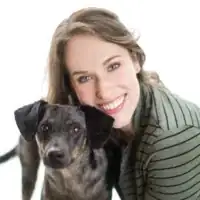 Lauren NovackLauren Novack is a Certified Dog Behavior Consultant at Behavior Vets NYC where she helps fearful, anxious, and aggressive pets and their owners. She has completed coursework for her MS in Applied Behavior Analysis at Hunter College. Lauren’s research explores the intersection between training practices and animal welfare. She currently serves on the Editorial Advisory Board for Daily Paws and has appeared on Fox & Friends, Rachel Ray, and various news outlets with her dog Grayson.
Lauren NovackLauren Novack is a Certified Dog Behavior Consultant at Behavior Vets NYC where she helps fearful, anxious, and aggressive pets and their owners. She has completed coursework for her MS in Applied Behavior Analysis at Hunter College. Lauren’s research explores the intersection between training practices and animal welfare. She currently serves on the Editorial Advisory Board for Daily Paws and has appeared on Fox & Friends, Rachel Ray, and various news outlets with her dog Grayson.
Certified Dog Behavior Consultant Start training your dog and doing enriching things, such as playing and exercising it.
Start training your dog and doing enriching things, such as playing and exercising it.
References
- ↑ https://www.oakhurstvet.com/blog/napoleon-complex-canine-dealing-with-small-dog-syndrome/
- ↑ https://www.baywoof.org/featured-article/are-tiny-dogs-harder-to-train-debunking-the-myth-of-small-dog-syndrome
- ↑ https://www.akc.org/expert-advice/lifestyle/why-small-dogs-behave-differently-than-large-dogs/
- ↑ https://www.akc.org/expert-advice/lifestyle/why-small-dogs-behave-differently-than-large-dogs/
- ↑ Lauren Novack. Certified Dog Behavior Consultant. Expert Interview. 23 February 2021
- ↑ https://thedogsjournal.com/how-to-avoid-small-dog-syndrome/
- ↑ Lauren Novack. Certified Dog Behavior Consultant. Expert Interview. 23 February 2021
- ↑ https://www.madpaws.com.au/blog/small-dog-syndrome/
- ↑ https://www.akc.org/expert-advice/lifestyle/why-small-dogs-behave-differently-than-large-dogs/
- ↑ https://vcahospitals.com/know-your-pet/obesity-in-dogs
- ↑ Lauren Novack. Certified Dog Behavior Consultant. Expert Interview. 23 February 2021
- ↑ https://dogsbestlife.com/home-page/dont-let-your-small-dog-exhibit-the-napoleon-complex/?cn-reloaded=1
- ↑ https://www.petful.com/behaviors/small-dog-syndrome-training
- ↑ Lauren Novack. Certified Dog Behavior Consultant. Expert Interview. 23 February 2021
- ↑ https://www.petful.com/behaviors/small-dog-syndrome-training
- ↑ https://www.dogbreedinfo.com/articles/smalltoydogs.htm
- ↑ Lauren Novack. Certified Dog Behavior Consultant. Expert Interview. 23 February 2021
- ↑ https://www.oakhurstvet.com/blog/napoleon-complex-canine-dealing-with-small-dog-syndrome/#:~:text=Be%20the%20Alpha%20%E2%80%93%20Establish%20the,them%20but%20given%20by%20you.
- ↑ https://www.akc.org/expert-advice/training/how-to-create-house-rules-for-your-new-puppy/
- ↑ Lauren Novack. Certified Dog Behavior Consultant. Expert Interview. 23 February 2021
- ↑ https://positively.com/dog-training/find-a-trainer/how-to-choose-a-good-dog-trainer/
- ↑ https://vet.purdue.edu/hospital/small-animal/services/behavior-medicine.php
- ↑ https://vcahospitals.com/know-your-pet/testing-for-increased-thirst-and-urination
- ↑ https://www.psychologytoday.com/us/blog/animals-and-us/201312/why-do-small-dogs-have-so-many-psychological-problems
- ↑ Lauren Novack. Certified Dog Behavior Consultant. Expert Interview. 23 February 2021
- ↑ Lauren Novack. Certified Dog Behavior Consultant. Expert Interview. 23 February 2021
- ↑ https://www.psychologytoday.com/us/blog/animals-and-us/201312/why-do-small-dogs-have-so-many-psychological-problems
- ↑ https://suburban-k9.com/small-dog-syndrome/
About This Article
Small dog syndrome is an attitude and behavioral problem that can develop in small dog breeds. Signs that your dog has small dog syndrome include poor social skills, frequent disobedience, and aggression. Keep in mind that small dogs don't inherently act this way. Instead, they develop small dog syndrome because they're coddled and held to different standards than large dogs are. For more tips from our Veterinary co-author, like how to avoid or correct small dog syndrome, scroll down!
